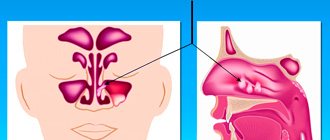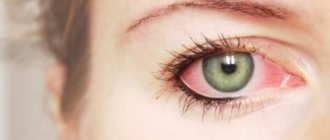Snot is the body's response to foreign agents. In everyday life, we are surrounded by huge hordes of allergens, viruses, and bacteria. With strong immunity, all these enemies are not dangerous.
When our immune system fails, any of these agents is able to “settle” in the nasal cavity and work its evil joke. So, a runny nose appeared. First of all, observe the nature of the snot. They can vary in color, thickness, transparency, and even smell.
An absolutely healthy person may also develop snot as a protective reaction to dry air, dust, dehydration, hypothermia, and other irritants. Such snot is short-lived and passes quickly.
If you have liquid and clear snot, you should suspect an allergy or a viral attack. Naturally, the diagnosis is not made based on snot alone, but also takes into account other symptoms that bother the patient.
Only in the case of a change in the color of the snot, namely when the discharge becomes yellow, green, with a brown tint, or purulent bacterial rhinitis be established with high accuracy .
Most often, bacterial snot appears in children as a consequence of an advanced viral infection. This occurs in cases where the child is often sick or the viral infection is not treated properly.
Why does snot change color and turn green?
White blood cells – leukocytes – “live” in our blood. They are always on guard to prevent the proliferation of infectious agents. Normally, the number of leukocytes ranges from 4–9·109/l. In children, the upper limit of normal is higher and depends on the age of the child.
When bacteria enter the body, the number of white blood cells increases sharply and the fight begins. As a result of the “battle,” both bacteria and leukocytes die. The accumulation of these dead cells colors the snot in different shades: yellow, green, brown.
The richer the color, the stronger the infection . Therefore, in most cases of green snot, the culprit is a bacterial infection.
Green snot can become one of the symptoms of serious diseases, such as:
- sinusitis;
- sinusitis;
- ethmoiditis;
- tracheitis;
- bronchitis;
- meningitis;
- others.
Therefore, (yellow, green, brown) appears seek advice from an otolaryngologist .
The color of a runny nose says a lot about the disease. You can read what this or that color of snot means in the article [what the color of a runny nose says].
Causes
Rhinitis of a bacterial nature does not appear out of nowhere. Its cause is the entry of pathogenic microorganisms from the external environment or excessive proliferation of one’s own bacteria due to a decrease in the protective function of the immune system.
Any infection of the throat, nose, upper respiratory tract, or ear can provoke the development of the disease. It is important to know that the causes of a runny nose lie not only in the fact that a large number of bacteria are present on the mucous membrane. The viscosity of the snot is important. For example, if it is high, then pathogenic microorganisms stay in them longer.
It's not good when there is no mucus at all. It protects the epithelium of the nasal passages from the introduction of bacteria. In its absence, the tissues remain defenseless.
Symptoms of bacterial rhinitis
- dryness, tickling, burning in the nasal passages (in the first days of illness);
- headache;
- increased body temperature (more often yes than no);
- nasal congestion (at the height of illness);
- impaired sense of smell;
- conjunctivitis (sometimes);
- lacrimation;
- unpleasant odor of discharge from the nasal cavity (with an advanced bacterial process);
- irritation and dryness of the wings of the nose;
- poor appetite;
- pain in the maxillary sinuses.
Features of the disease
IT IS IMPORTANT TO KNOW!
A remedy that will help you get rid of a runny nose once and for all
>>>
The mucous membrane of the nasopharynx is most often the “entry gate” for various infections, viruses and bacteria, which, after penetration, begin to actively multiply, affect superficial tissues, cause swelling, difficulty breathing, profuse thick nasal discharge, elevated body temperature and other symptoms characteristic of colds or flu. A feature of bacterial rhinitis is that its pathogens often affect not only the nasal mucosa, but also the respiratory tract, penetrate the bloodstream, thereby causing general intoxication of the body . Bacterial rhinitis is often not an independent disease, but a complication of an untreated runny nose of a viral nature. It can be distinguished from other types of rhinitis using laboratory tests or the color of the mucus. When a runny nose is viral in nature, it is transparent, but when it is bacterial, it is yellowish-green in color . The characteristic color is explained by the death of bacteria and leukocytes that were present in the nasopharyngeal mucosa during a healthy state of the body.
How to treat bacterial snot in adults and children?
It is necessary to treat a bacterial runny nose correctly and effectively, and it is better if a qualified doctor does this after examining the nose, ears and throat. As you guessed, a visit to the ENT specialist is necessary.
Most often, patients are bothered by bacterial or viral snot. To begin with, the doctor will understand the origin of the runny nose and find out what kind of snot he is dealing with: bacterial or viral. From here a treatment plan for rhinitis will be drawn up.
It is very difficult to be safe from a runny nose. Even the most scrupulous parents have children who manage to get sick, and often with complications. Often mothers simply come to the clinic in a panic and list all the vitamins and prevention methods they used, but their child again sits at home and does not go to kindergarten or school. And the child’s bacterial snot is to blame. They do not go away for a long time, lasting up to 3-4 weeks.
If the snot is of bacterial origin , then it must be treated with antibacterial agents . Viral and allergic rhinitis cannot be treated with antibiotics.
First, it is necessary to create sufficient air humidity in the patient’s room, as well as maintain the room temperature within 20 degrees. Devices for air humidification will be useful, and in their absence, the old-fashioned method will do - hanging wet towels on radiators. Wet cleaning and ventilation of the home should be done daily.
Before going to the doctor, rinse your nose with saline solutions or chamomile infusion . Take a full pipette and pour into each nostril in turn, and so on 3-4 times a day. Blow your nose two minutes after injecting the solutions. This will make it possible to thin the mucus and make it easier to remove it from the nasal cavity.
Saline solution can be purchased at the pharmacy: saline solution, Aquamaris, Quix, Salin, others. At home, a saline solution is prepared by dissolving a teaspoon of salt (preferably sea salt) in a glass of lukewarm boiled water. Chamomile flowers are infused for 40 minutes (a teaspoon of flowers per 200 ml of boiling water).
An article on the topic - how to prepare a saline solution.
The famous pediatrician Komarovsky recommends using the drug ectericide, consisting of oxidation products of fish oil in a solution of sodium chloride, for green snot.
Complete article about the treatment of green snot using the methods of Doctor Komarovsky.
The drug has a softening, antiseptic and anti-inflammatory effect.
The nasal passages can be lubricated with ectericide or a few drops can be instilled into each nasal passage up to three times a day.
Vasoconstrictor drops are not used for bacterial rhinitis ; they can provoke swelling of the nasopharynx and aggravate the patient’s condition.
Usually the doctor prescribes antiseptic and antibacterial agents locally (into the nose). Washing, irrigation, and instillation of the nasal passages are used. The following drugs are used: furatsilin, dioxidin, chlorophyllipt, miramistin, protargol, collargol, sulfacetamide.
Vasoconstrictors are used very rarely (tizin, sanorin, galazolin). They are indicated in cases where nasal breathing is almost impossible for patients.
: fusafungin, isofra and polydex has a good effect The doctor chooses one of the remedies. In addition, IRS-19 spray can be prescribed, which actively stimulates local immunity through the production of immunoglobulins.
In some cases, when a bacterial runny nose has just begun, you can use Cameton or Pinosol spray. Due to the antiseptic effect of the essential oils contained in these preparations, inflammation in the nasal passages is relieved and breathing improves.
Do I need to take antibacterial tablets for green snot?
According to all the rules for prescribing antibiotics, it is first necessary to identify the bacteria by bacteriological culture and select an antibiotic to which the infectious agent will be sensitive.
Unfortunately, culture results with an antibiogram come only after 10 days, and in the best case – after 5 days. What happens? Should we sit and wait for the results and let the infection spread?
Of course not. The doctor will prescribe an antibacterial agent. In most cases, it is possible to cope with the infection at random. But if the drug does not work, you will already know exactly what caused the green snot and which antibiotic will be 100% effective.
Important! The main thing is that bacterial cultures from the nose and throat are taken before using antibacterial agents.
For lingering green snot, antibacterial agents are prescribed systemically (in the form of tablets or by injection). For this purpose, antibiotics of various series and generations are used. Most often, for bacterial rhinitis, the following antibacterial drugs are used:
- amoxiclav;
- ampicillin;
- flemoxin-solutab;
- augmentin (a popular antibiotic in pediatric practice);
- sumamedu;
- zinnatu;
- macrofoam;
- cefuroxime or cefazolin or ceftriaxone-cefazolin or ceftriaxone;
- ofloxacin;
- ciprofloxacin;
- moxifloxacin.
A systemic antibiotic is prescribed only by a doctor, taking into account the age, weight and condition of the patient. For green snot, as a rule, an antibiotic is used for at least 7 days.
Article on the topic - a list of analogues of sumamed.
Is it possible to cure a bacterial runny nose without antibiotics?
Traditional medicine for bacterial snot
Infection is a serious matter, so relying only on ant herbs would be imprudent . Traditional methods should only complement the main drug treatment of green snot.
Herbal infusions for rinsing the nose
Allowed nasal rinsing with infusions:
- chamomile;
- linden;
- calendula;
- sage;
- oak bark;
- yarrow;
- eucalyptus;
- successions.
Infuse the herbs until they cool, after brewing 10 grams of the raw material with boiling water (200–300 ml).
Pour 2 ml of infusion into each nostril. The head should be slightly tilted back. After two minutes, blow your nose.
Juices from green snot
Juice instillations have an antiseptic and anti-inflammatory effect:
- beets;
- cranberries;
- Luke;
- carrots;
- geraniums;
- Kalanchoe;
- aloe;
- celandine (always dilute with water: 2 drops of juice per 100 ml of water);
- potatoes.
Inject 2 drops of fresh juice into each nostril. For children, the juice is diluted with water or saline in a 1:1 ratio.
Propolis drops
Propolis tincture has excellent antibacterial properties. To prepare nasal drops you need to take:
- 15 drops of pharmaceutical propolis tincture;
- 5 grams of sea salt;
- 200 ml boiled water.
Mix all the ingredients, the drops are ready. Rinse your nose twice a day. Inject 1 ml of propolis drops into each nostril.
Additional treatments for bacterial snot
For successful treatment of bacterial snot while taking antibacterial agents, the patient is shown additional methods:
- vitamin therapy;
- dietary nutrition;
- treatment of intestinal dysbiosis;
- weight normalization;
- abundant intake of herbal infusions and fruit drinks;
- walks in the fresh air (at normal body temperature);
- homeopathy;
- spa treatment (sea climate, coniferous forests, salt mines);
- psychotherapy.
It is easier to overcome any disease in the bud, but if it comes to complications, self-medication is not the best choice. To cure a bacterial runny nose and prevent a chronic process, seek help from the ENT department.
How to treat bacterial sinusitis
Treatment
Treatment of bacterial rhinitis poses several tasks:
- elimination of infection from the nasal passages;
- removal of infected mucus that interferes with breathing;
- monitoring the patient’s general condition and body temperature;
- preventing the development of complications.
Treatment of bacterial rhinitis is with antibiotics. Even if a child has a runny nose, these medications cannot be neglected, since the complications of the disease itself are much more severe.
In addition to antibacterial agents, the patient is prescribed local medications: vasoconstrictor drops that can eliminate swelling and ease the patient’s breathing. They must be used in accordance with the instructions. The maximum duration of use is 5 days. It is better to instill at night, since it is at this time that mucus collects in the nasal passages and makes breathing difficult.








